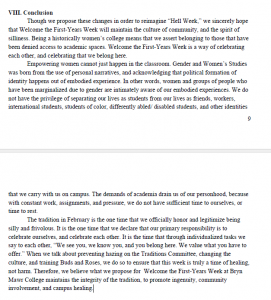This week’s readings got me thinking about the ways in which technology is mindfully, or unmindfully, used in the pursuit of public history. Unmindful use can span from limiting a project’s accessibility to truncating an artifact’s meaning, even not vetting the authenticity of the material. Though technology use can allow public history projects to be accessed by a much wider audience, it must be used judiciously and mindfully, in order to preserve the integrity of the discipline.
Sharon Leon, writing for the National Council on Public History, explained a common issue plaguing digital public history projects: Even though they promise to reach out to a larger audience and pool of contributors, the digital medium can reproduce the same class and culture barriers to accessibility. Access to the internet and technological devices is a constant pressure for any digital project of this sort. In the same way that physical exhibits can, intentionally or not, bar access to certain populations, digital projects also restrict those without access to technology. While public history projects cannot be expected to provide technological access to all interested parties, the creation, maintenance, and mission of the project needs to reflect this issue. What such projects can mindfully design are various accessibility features, such as for those with physical, sensory, or cognitive disabilities. Such features are widely available and, as Leon argues, are integral to mindfully crafting a digital public history project.
Other accessibility tweaks are more minor in nature: Rebecca Onion, writing for Slate, celebrated her cataloging of Slate’s historical blog posts in a timeline fashion. This allowed for users to more easily and intuitively navigate the various artifacts. This is a seemingly minor addition to reorganize the content, but it allows for a significantly more accessible project. Users can now browse a specific time period, compare changes over time, and myriad other uses.
Mindfulness in public history projects stretches beyond design, however. Another article by Rebecca Onion argues against the flippant use of historical artifacts by Twitter “historical images” accounts. Such accounts rarely provide any context for the images that are used, let alone links to further investigation. Worse yet, some images are not even authentic, but are photoshopped or misidentified. Any group or individual who pursues such a project (and those Twitter accounts fall firmly within the Public History sphere, even if not coordinated by academics) need to be mindful of the authenticity of their posts. Further, context should be available. While not all who frequent the project will be looking for deeper engagement with the subject matter, the knowledge that the topic is, in fact, deeper than just the picture is important. History is not just names, dates, pictures, or artifacts. It is all of the context surrounding those things. History is not just the who and when, it is the why and how. Not being mindful of this element of history undermines the integrity of the field and presents a poor, neglectful, and inaccurate image to the public at large.

